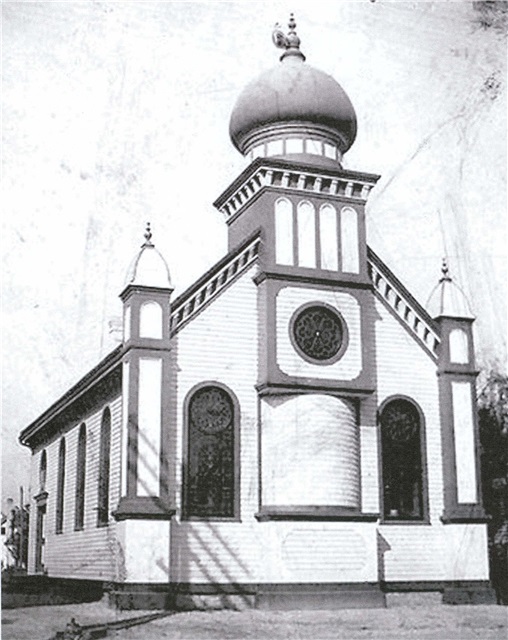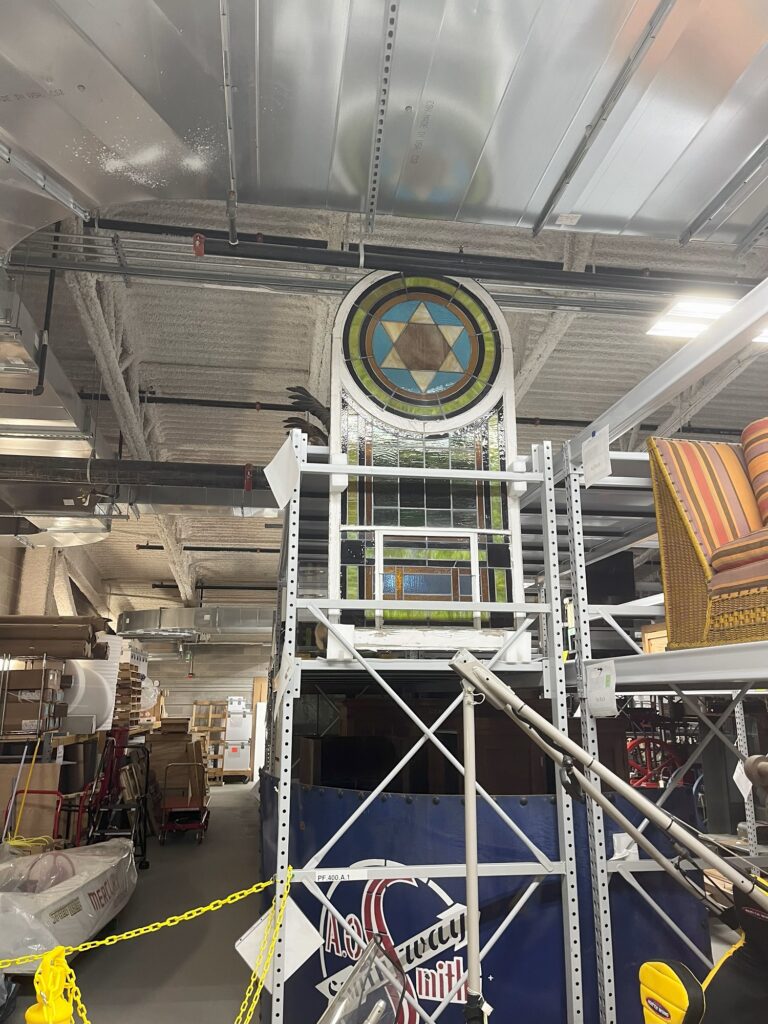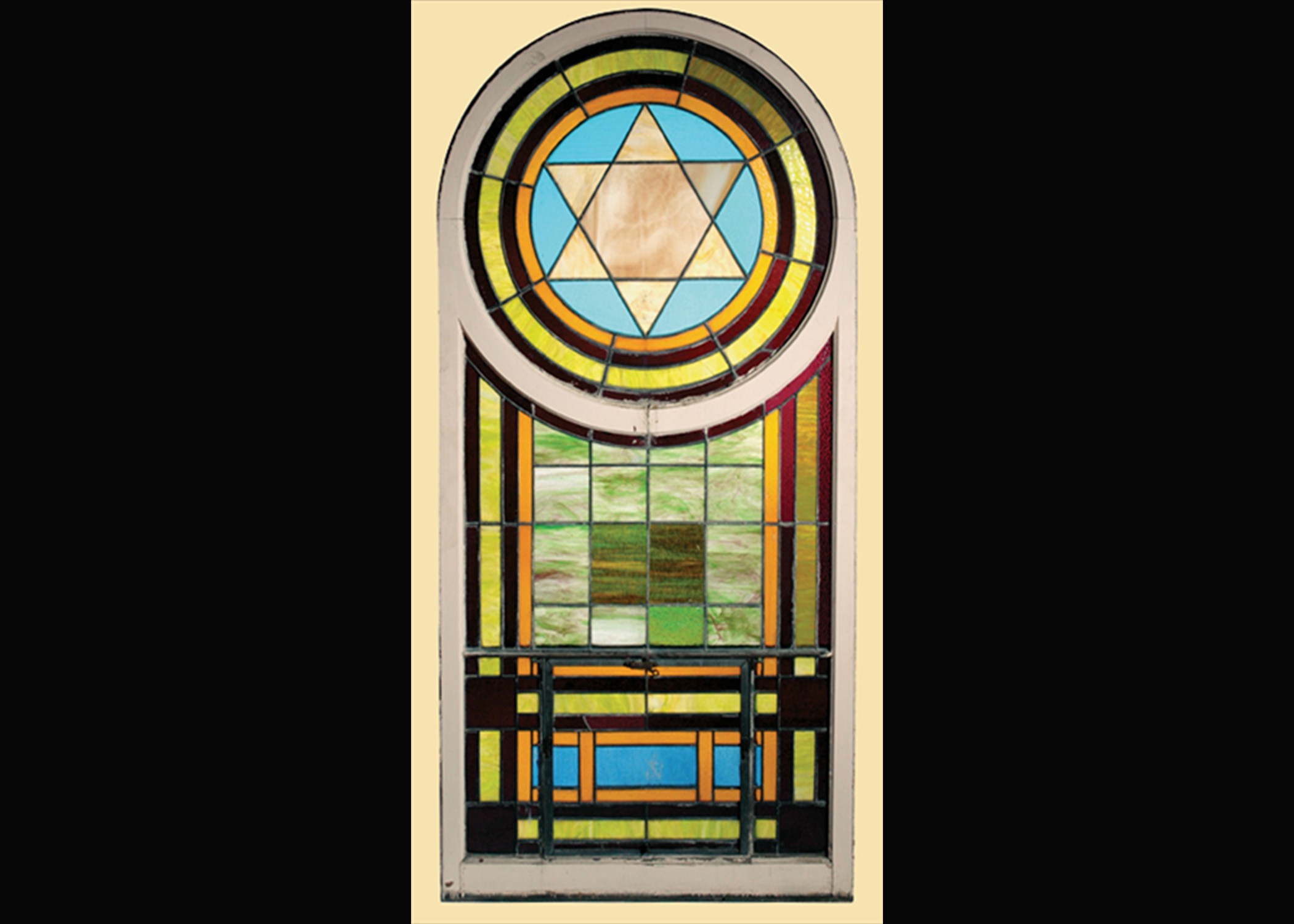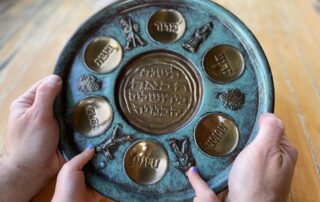In the early 20th century, millions of Jewish people fled Russia due to persecution and poor quality of life. Some of them ended up in Wisconsin. In Sheboygan, a former synagogue with an historic stained glass window acts as a testament to the area’s once thriving Jewish community.
Molly Hunken brings us the story of the community through the history of Adas Israel, or White Shul, synagogue. The building’s stained glass window is part of the Wisconsin 101 project, which tells our state’s history through objects.
==
Although most Jewish people immigrating from Eastern Europe to the United States settled down in cities, built communities in smaller towns. One such place was Sheboygan, Wisconsin.
With a population nearing just 23,000 by 1900, the town of Sheboygan was small, not somewhere you might imagine large groups of new immigrants to flock to. However, according to Susie Alpert Drazen — whose first family member arrived in eastern Wisconsin in 1904 — Sheboygan was where employers were hiring.
“They said, pointing to a map of the United States, ‘You can find work here, here and here. And they’re hiring here, here and here. So they fronted him train ticket, money and away he went to Sheboygan, Wisconsin.”
According to information compiled by Joel Alpert, Drazen’s relative, the Jewish population of Sheboygan reached its peak at around 1,000 people in the mid-1900s.
Also, much of Sheboygan’s Jewish population came from one area in Russia, what would today be Belarus. The specific area was the Pale of Settlement, an area established in 1791 in which many Jewish people were legally permitted to settle. It was near the western border of czarist Russia. Drazen said many Jewish people wanted to leave this area because of dwindling job opportunities and the restrictive legal action against Jewish people.
“The period of time after 1881 in Russia they enacted what’s called the May Laws, which were very restrictive laws specifically aimed at Jewish people. Really, (it) was an exodus of Jews from Russia,” Drazen said.
According to Drazen, the fact that so many immigrants from this one area landed in the same place in Wisconsin is common. The term “landsleit” refers to a group of Jewish people, especially from Eastern Europe, who come from the same area or town. She says this is a perfect description of much of Sheboygan’s Jewish population.
Phyllis Holman Weisbard’s family came to Sheboygan for this reason. Although she grew up in Green Bay, Holman Weisbard said she discovered through ship manifests that her family came to Sheboygan in the early 1900s following various family members.
Building synagogues and a community
Soon after becoming established in Sheboygan, Jewish people began constructing synagogues. The first one, Ahvas Sholem or the Brick Shul, opened its doors in 1903. At one point, Sheboygan housed three separate synagogues. These congregations were commonly referred to by their colloquial names.
“The synagogue that my family belonged to was on the corner of 13th and Geele,” Drazen remembered. “I didn’t know it had a real name. It was called The Brick Shul — shul being a Yiddish word for synagogue. That was because it was made of bricks. There was also a White Shul, because it was white. And then there was the Holman Shul, which the Holman family founded.”

Adas Israel synagogue, or the White Shul, at the corner of North 13th St. and Carl Ave., Sheboygan, Wisconsin, c. 1910. (Courtesy of the Sheboygan County Historical Research Center and Wisconsin 101)
The White Shul had originally formed in the 1890s as a congregation called Adas Israel, meaning “Community of Israel.” It became the second synagogue in Sheboygan after acquiring a building on North 8th Street in 1907. There, congregants practiced Orthodox Judaism.
The congregation moved to their final location, a white building on the corner of North 13th St. and Carl Ave., in 1910. Because of the building’s appearance, Adas Israel’s synagogue became known as “The White Shul.”
The architecture of The White Shul included a large onion dome at the top of the building. It also housed a stunning stained glass window featuring a Star of David and blue, green and orange glass paneling.
According to Susie Drazen, the window’s material has an important purpose in Jewish culture and religion.
“In Judaism, there is a concept called ‘Hiddur Mitzvah,’” Drazen said. “And it means that we are beautifying the mitzvah. It’s like dressing up to go to church or to synagogue. A stained glass window is something special. A stained glass window is something extra. It’s beautiful.”
Jewish families attended services, educated their children and became involved in the vibrant community surrounding The White Shul for the next 30 years. However, by the 1940s, much of the new generation of Sheboygan’s Jews did not feel as much of a connection to Orthodox Judaism as their parents did.
In 1944 as membership declined at Adas Israel, a new Conservative Jewish synagogue called Congregation Beth El — the only remaining synagogue in Sheboygan today — largely replaced Adas Israel. In 1945, Congregation Beth El rented The White Shul building from Adas Israel until their own synagogue was completed in 1951.
Adas Israel dissolved in 1953. The White Shul was then sold to a Christian congregation called The Church of God. The new owners renovated much of the building, removing architectural details, like the onion dome. However, the Star of David window remained in the building.

The White Shul building, the former home to Adas Israel, is located on the corner of Carl Avenue and North 13th Street in Sheboygan, Wisconsin. The window was originally on the side of the building and could be seen from the street. It was replaced with a new window after former congregant David Shoenkin offered the building’s residents a new window in place of the stained glass one. (Courtesy of Phyllis Holman Weisbard)
Over the last few decades, Sheboygan’s Jewish population has shrunk considerably. Jonathan Pollack, the chair of Madison Area Technical College’s History Department and an honorary fellow at UW-Madison’s Mosse/Weinstein Center for Jewish Studies, said this is a common trend.
“Jewish families in small towns, especially starting really in the 1920s, saw college as a great thing and something they wanted their kids to pursue for all the opportunities that a college education brought,” Pollack said. “That same education meant that a lot of people were not going back home. They weren’t going to take over the family business and they were going to go on. They were going to move to a bigger city.”
Having grown up in Sheboygan, Drazen supported this claim. She said members of the town’s Jewish community, like herself, were not encouraged to stay. They were told to go to college and create a life for themselves, likely in a larger Jewish community elsewhere, Drazen said.
Drazen and Pollack both think that unless more job opportunities arise in Sheboygan, the Jewish community will likely continue to diminish. However, pieces like the Star of David window are an important reminder of the rich history of Jewish culture in Sheboygan.
Preserving Adas Israel’s stained glass window
Adas Israel’s stained glass window was donated to the Wisconsin Historical Society in 2006 by David Shoenkin, a former congregant at The White Shul. Wanting to preserve Sheboygan’s Jewish history, “he traded a new, energy-efficient window to the current occupant of the building, in exchange for this evocative artifact.” David Driscoll, a curator at the Wisconsin Historical Society, traveled to Sheboygan to pick it up.

Near the door of the Wisconsin Historical Society’s climate-controlled storage facility, the stained glass window now provides an colorful flair to the entrance. The window sits between other historical pieces which are preserved for public viewing and display in museum exhibits. (Molly Hunken/WPR)
“It wasn’t something that we came up with,” Driscoll said. “It was something that David Shoenkin approached us with because it was important to him both historically and personally.”
Driscoll said that Shoenkin’s offer came at the perfect time, as the Wisconsin Historical Society had begun diversifying its collections to be more inclusive of all of the state’s different cultural histories.
“Like many historical societies, this one was kind of founded classically by well-off white men, and it kind of documents the experience and lives of the elite,” Driscoll said. “I think that’s something that most museums are trying to kind of drag the institutions away from. So having a, kind of, different religious tradition represented was something we were after.”
The Wisconsin Historical Society has yet to display the Star of David Window in a museum exhibit, though it could be shown in the future. Sharing the objects stored in the historical society archives through the radio and internet however, Driscoll said, is a great way for Wisconsin history to reach the public.











